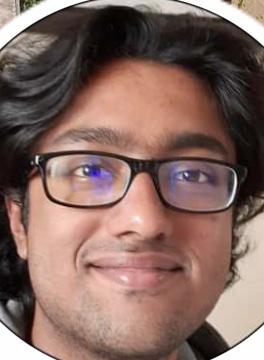Readers’ Club Activity - Intersection of Hindustani and Western Classical Music in Shakespearean film adaptations

The Readers’ Club of the Department of English organized a virtual interaction with Aditya Narayan, currently a scholar from the University of Edinburgh, Scotland, on: "Intersection of Hindustani and Western Classical Music in Shakespearean film adaptations” on 22 January 2022. The lecture focused upon the idea of dissecting intersections in art, viewing it as a hybrid organism growing across spaces.
The session began with a formal introduction to the speaker who initiated the elaboration of how melodies in cinema became signifiers of peculiar themes over time, evolving a representative value of their own. He then moved on to discuss the economically intelligent craft of Shakespeare and how frequently he is misinterpreted by the mass demographic. Briefly referring to the role of classical music in his life, Aditya expounded on how music theory infinitely increases the analytical derivations and liberates a visual artefact furthermore. When a text is transmuted into a cinematic piece, a single narrative perseveres across three dimensions, that of a text, a soundtrack, and visualization. Moving along, he highlighted how the link between visuality and orality is often overlooked and how his research strives to fill this gap. Not only does it meticulously attend to the long-drawn ignorance, but it also honours the composer's translation of the author's work via his own choices.
Citing the work of academician Jorgen Bruhn on the movie Shutter Island, he expanded his point of lack of holistic intersectional research in the field.
A major section of the lecture was dedicated to a critical, in-depth understanding of India's historical tryst with Shakespeare. It began as a method of colonial instruction in educational institutions, giving rise to an initial dismissal. However, eventually, local artistic mutations devised him into a voice of the masses.
Coming to the final portion, he explored the spectrum of the transformation of this relationship via pop culture adaptation and how music had been a quintessential element, gradually becoming a part of the mass consciousness. Through examples of experimentations by Bollywood luminaries like R. D. Burman, Laxmikant-Pyarelal, and Vishal Bharadwaj, he threw light on the cross-cultural creations which prove to be more than mere adaptive. They've become emblematic of the relationship India shares with British art by bringing in a proportion of Western as well as Hindustani classical. There is an urgent need to regard and recognize the elemental value of music as it is instrumental in bringing in cultural context, along with numerous other intricacies.
This exhaustive discussion was followed by a dynamic interaction and Q/A where students and the faculty members of the department actively participated and shared their observations of their cinematic consumption tendencies and how they'll be now transformed.

